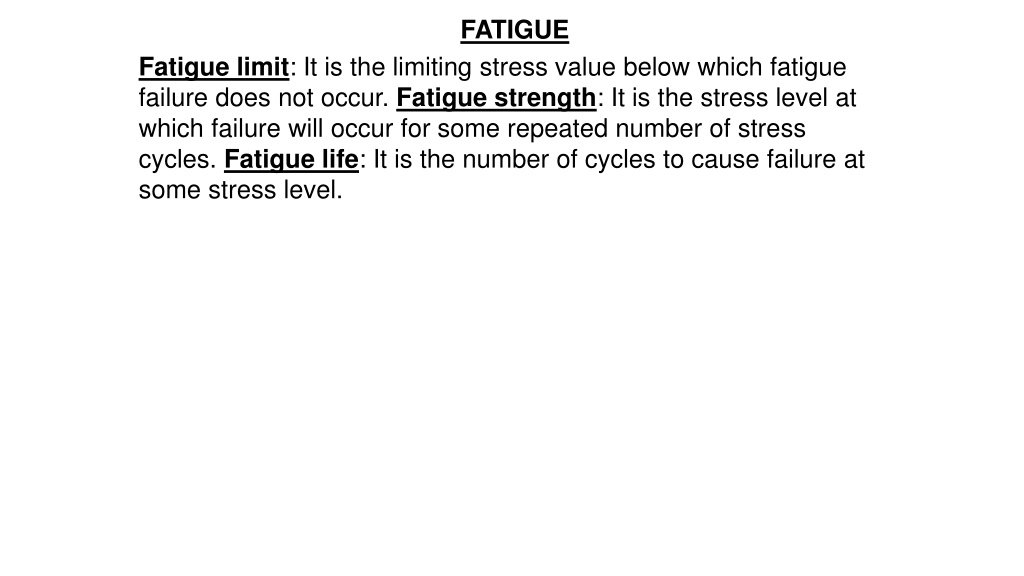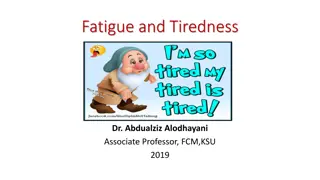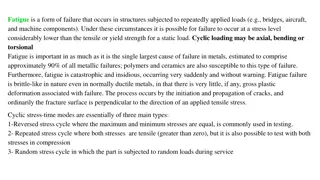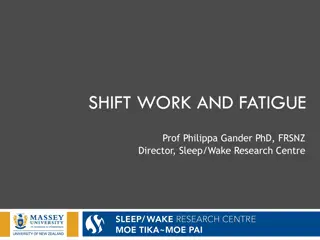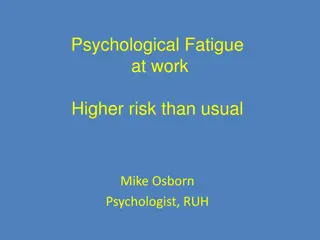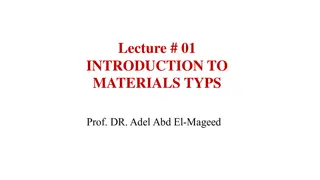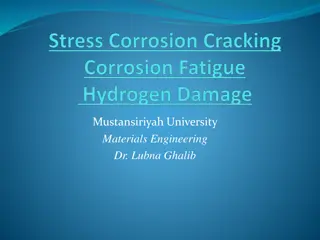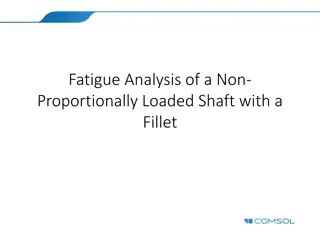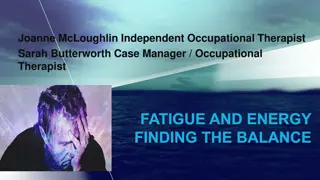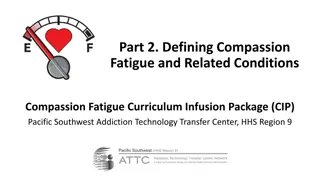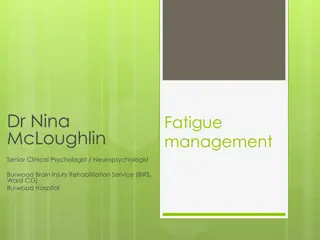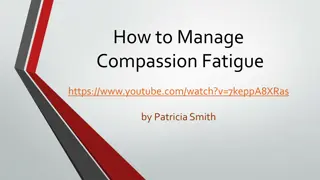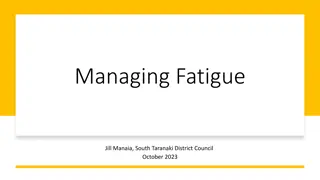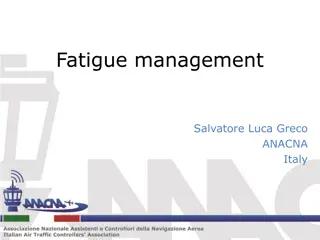Understanding Fatigue in Materials Engineering
Fatigue in materials engineering is a phenomenon where failure occurs under repeated stress cycles. Factors influencing fatigue life include mean stress, surface effects, thermal and corrosion fatigue. Creep behavior at elevated temperatures is also crucial. Recognizing these aspects is vital for designing durable structures and components.
Download Presentation

Please find below an Image/Link to download the presentation.
The content on the website is provided AS IS for your information and personal use only. It may not be sold, licensed, or shared on other websites without obtaining consent from the author. Download presentation by click this link. If you encounter any issues during the download, it is possible that the publisher has removed the file from their server.
E N D
Presentation Transcript
FATIGUE Fatigue limit: It is the limiting stress value below which fatigue failure does not occur. Fatigue strength: It is the stress level at which failure will occur for some repeated number of stress cycles. Fatigue life: It is the number of cycles to cause failure at some stress level.
FACTORS THAT AFFECT FATIGUE LIFE The factors that affect fatigue life are mean stress and surface effects. Mean stress: It is the average stress value that affect the fatigue life.
Fracture of an aluminium crank arm. Dark area: slow crack growth. Bright area: sudden fracture.
Micrographs showing how surface fatigue cracks grow as material is further cycled. From Ewing & Humfrey (1903)
Increasing the mean stress level leads to a decrease in fatigue life. Surface Effects: Most cracks leading to failure originate at surface positions. Therefore, the surface of a material must be improved by special designs and surface treatments.
ENVIRONMENTAL EFFECTS ON FATIGUE There are two types of environmental effects on fatigue. These are thermal fatigue and corrosion fatigue. Thermal fatigue: It usually occurs at high temperatures by fluctuating thermal stresses. These thermal stresses are caused by expansion or contraction of a material with temperature variations. The thermal stress ( ) that is caused by a temperature change ( T) is dependent on the coefficient of thermal expansion ( l) and the modulus of elasticity (E). T E l =
Corrosion fatigue: It is the fatigue that occurs by the simultaneous action of a cyclic stress and chemical attack. CREEP Materials are often placed in service at elevated temperatures and usually exposed to static mechanical stresses. Deformation of materials under these conditions is called creep. For example: Turbine rotors in jet engines.
Generalized creep bahavior: A typical creep test consists of exposing the material to a constant stress while keeping the temperature at a constant value. During the creep test, deformation or strain is measured and plotted as a function of time. Figure 8.28 The figure of the typical creep test
CHAPTER 8: METAL ALLOYS Metal alloys are often grouped in two classes: 1. Ferrous alloys: In these alloys, iron is the main metal. This class includes steels and cast irons. 2. Nonferrous alloys: These alloys do not contain iron. Fabrication of metals: The metal fabrication techniques are classified according to the following figure: Figure 8.1 10
CHAPTER 8: METAL ALLOYS Fabrication of metals: The metal fabrication techniques are classified according to the following figure: Figure 11.1 11
